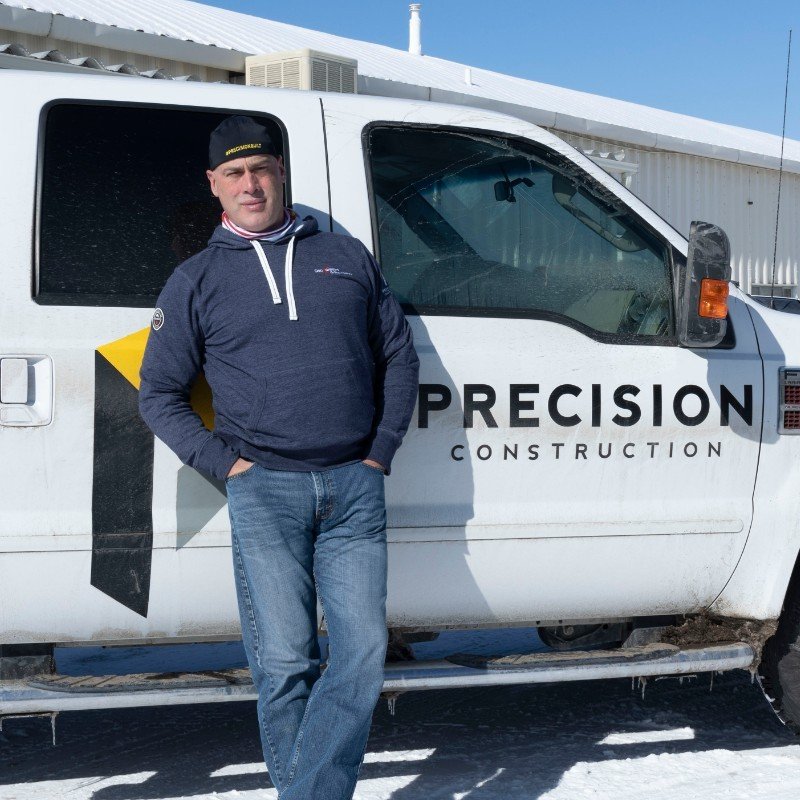Meet the Godfather of Steel: Scott Kelly
Scott Kelly is a Colorado native who prides himself on building projects others can't. He began his career as an apprentice in high school before starting his own business in 2005. As the owner of Precision Construction, Scott is at the forefront of the decking industry and has been nationally recognized for innovation in steel frame construction. He's also focused on spreading consumer awareness of the benefits of steel framing, earning the nickname "The Godfather of Steel."
Interviewer: Tell us about you and your company
Kelly: I've been in business for almost 20 years, but my love for building and creating started at a young age. I moved from Legos and blocks to stonemasonry and worked with my father in the tenant finishing industry. I was lucky to gain experience in all aspects of construction, from commercial contracting to framing and electrical work.
In 2005 I established SK Concepts, specializing in custom carpentry, decks, and remodels. In 2015, we rebranded to Precision Construction. We're extremely dedicated to and proud of our relationships with clients. Being welcomed back into their homes after completing projects is my favorite part of the business.
After losing my father in 2006, carpentry and construction became even more important and personal to me as a way to remember him. I still have his carpenter's pencil, and even if it's just to draw a line, I've used his level or framing square on every project I've completed since he passed.
Interviewer: How did you get the nickname "The Godfather of Steel?"
Kelly: I'm still trying to figure it out! A few people could also claim that title, but it came up and stuck with me. We've been doing this for so long. I have a real passion for steel, which comes through in what I say. I'm always talking about it. Jason Alloway (owner of New Castle Steel) and I were exploring steel before it was as commonplace as it is now. We were proponents of steel before many companies that use it today. We were early adopters and believed in its benefits before it caught on in mainstream construction.
Interviewer: Would you consider steel framing mainstream today?
Kelly: Yes. Steel has made a giant leap in consumer awareness and knowledge. This is year seven or eight for me of only offering steel framing. I don't give clients another choice. When I initially made that commitment, there was a lot of pushback. I had to really sell it to people and get them familiar and comfortable with it as an option. It was something that your average homeowner didn't know about it. Today, much of the work I get comes from people finding me because they are looking for someone specializing in steel. Consumers are doing their research, and between New Castle Steel and other competitive steel framing manufacturers, the knowledge is getting out there. More and more builders are at least starting to consider it.
Of course, COVID played a huge role in steel's growth. There were supply issues for wood, and prices skyrocketed. People were forced to look into alternatives. The number one pushback used to be that steel was more expensive, but then lumber became so costly. The cost-benefit analysis for steel over lumber became more apparent.
Interviewer: How would you compare lumber framing with steel framing?
Kelly: You can't compare apples to apples. If you're doing base cost vs. base cost, on paper, it can be a big jump to steel. The thing I usually draw attention to is that it's a short-sighted view just to compare initial costs. If you start looking at all the components that go into both and the benefits of each, the price is much closer than you might think.
Reputable builders consider the number of steps and processes they go through with their wood frames. It all adds ups. Good builders grade their lumber. When you buy 2x8 lumber, you're doing pretty good if two out of twenty are the same size. They line it all up, stack it from tallest to shortest, and start building that way. It starts flat, but then they have to use equipment to trim this and trim that. That's all time and labor that clients are paying for. Time and effort on things like this can kill productivity.
But if I order 300 pieces of New Castle Steel tomorrow, it would arrive with every single piece the exact same size.
The outdoor market is getting so big, and homeowners want more than a simple square or rectangular deck. No one is posting on social media about a 10x10 deck project anymore. When you're talking about marketing materials, NADRA, and getting into more extensive projects that are 16-20 feet off the house, you can't do that with a 2x8 or 2x10. So when you start comparing the cost of lumber with the cost of steel for those projects, that gap gets pretty narrow. You just can't get the same result with wood. You can find any homeowner in the world, and even if they have never built a thing in their life, they know they'll never find a piece of lumber that is straight at Home Depot or elsewhere.
Interviewer: Do you consider steel an upgrade or part of doing decking business today?
Kelly: I see a lot of builders in online groups who are quoting top-tier, six-figure projects complaining about not being able to sell a client on steel because it's too expensive. Then they'll put an incredibly costly clear-panel glass railing system in. Now you're putting expensive aesthetics on top of a crappy product. These aren't clients that are bargain shopping. It's our job to sell them a better product. An upgrade to their framing should be part of the quote. When you know it's a better option, but you're not presenting it, you're doing yourself, the customer, and the industry as a whole a disservice.
Interviewer: How long have you known Jason Alloway?
Kelly: I first met Jason online. We were in some of the same groups and had a vested interest in the same things, like steel framing. Over the years, we've built up a great dialogue. A few years ago, I went out to Atlanta to help another builder in that market with his steel frame product, and I got to spend time with Jason in person. Facebook groups can actually be productive!
Interviewer: What's the one thing you think your customers need to know about steel framing?
Kelly: It's not going anywhere. You can be in front of things or behind them. In Colorado and California, the Class-A fire ratings are not going anywhere. You meet those requirements with steel. Sustainability is also top of mind for everyone. Steel is the most recycled material on the planet right now and will likely continue to be so. You can adapt to better things or wait until you're forced to.
In our industry, every decking manufacturer has a talking point about how much recycled content is in their product. It's a selling point for sure, but it's not just a fad. Steel framing is also future-responsible. I have an 8-year-old son. We can build a deck today, and it will eventually reach the end of its service life. But with steel, someone can tear that down, take it to a scrap place and recycle it, and it can become a decking frame all over again. The bulk of wood torn away from old decks goes to the landfill. And as an added bonus, you don't have to pay for a dumpster for the wood. You can load up the steel and get paid for it at the scrap yard.
Interviewer: How does steel framing withstand Colorado winters and changing seasons?
Kelly: All of these new products, be it decking, railing, or framing, go through lab testing. Steel framing has hundreds of years of documented use in bridges, cars, and the biggest buildings in the world. There's a reason for that. From Colorado to Atlanta, tens of millions of decks are proof of steel's viability and usability. Everyone in the industry is a steel builder when you consider all the materials we use. Unless you're in a marine environment, you are using steel. We demo decks where the framing is shot every day, but the steel components--joists, etc.--are nowhere near the end of their service life. That's a ton of data to show that steel will last. If you're meeting with a client and you're afraid to step on their deck because the wood is shot, show them that the hardware is still in really good shape. It seems like a no-brainer to say, "Why don't we just build the whole frame out of that?" The homeowner can see that the joist hanger is still in good shape, so it's easy for them to make the leap to using steel for the entire frame. Their own eyes tell them that it's going to last.
Learn more about "The Godfather of Steel" and Precision Construction on their website.

